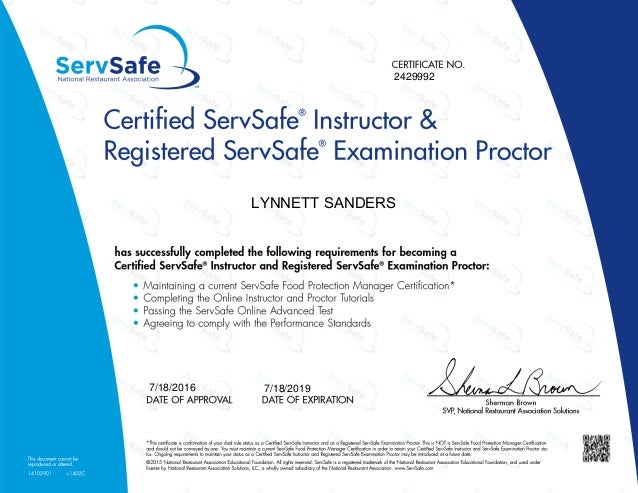Introduction
As I ventured into the realm of food safety, I encountered a pivotal moment that ignited a passion within me. Having witnessed the countless lives impacted by foodborne illnesses, I realized the profound impact educators can have in safeguarding public health. It was then that I set my sights on becoming a ServSafe instructor, armed with the unwavering belief that I could make a meaningful contribution to this essential mission.

Image: www.raisethegrade.com
Defining the Role of a ServSafe Instructor
A ServSafe instructor plays a crucial role in imparting knowledge and skills related to food safety practices to individuals working in the foodservice industry. Through interactive training sessions and practical demonstrations, these instructors empower participants with the expertise necessary to prevent foodborne illnesses and ensure public safety.
The Journey to Becoming a ServSafe Instructor
-
Gain a Solid Foundation in Food Safety: To be an effective ServSafe instructor, a thorough understanding of food safety principles is indispensable. You can acquire this knowledge through a ServSafe Food Handler certification.
-
Complete the ServSafe Instructor Certification Course: This comprehensive course offered by the National Restaurant Association covers a wide range of topics related to food safety, from sanitation to hazard analysis. Upon successful completion of the course and exam, you will be eligible to become a ServSafe Instructor.
-
Obtain Industry Experience: Practical experience in the foodservice industry is highly recommended for potential ServSafe instructors. Hands-on experience can provide you with invaluable insights and credibility in your role as an educator.
-
Maintain Your Certification: ServSafe instructors are required to renew their certification every five years. This involves completing continuing education courses and attending conferences to stay up-to-date on the latest trends and research in food safety.
Impactful Strategies for ServSafe Instructors
-
Foster Active Learning Environments: Engage participants by facilitating interactive discussions, role-playing, and hands-on training to enhance their understanding and retention of food safety practices.
-
Incorporate Real-Life Examples: Make your training relatable and captivating by sharing actual foodborne illness incidents and case studies to emphasize the importance of proper food handling techniques.
-
Provide Personalized Feedback: Take the time to assess participants’ progress individually, and offer constructive feedback to help them improve their knowledge and skills.
-
Emphasize the Role of Teamwork: Food safety is a collaborative effort. Encourage team communication and cooperation to create a working environment where safety is everyone’s responsibility.
-
Stay Abreast of Food Safety Trends: Regularly review food safety updates, research new technologies, and adjust your training materials accordingly to ensure you are providing the most current information.

Image: www.slideshare.net
Frequently Asked Questions about becoming a ServSafe Instructor
Q: What are the eligibility requirements to become a ServSafe Instructor?
A: To be eligible for the ServSafe Instructor Certification Course, you must have a current ServSafe Food Handler certification and a high school diploma or equivalent.
Q: How much does it cost to become a ServSafe Instructor?
A: The cost varies depending on the course provider. However, you can anticipate spending around $500 for the Instructor Certification Course and materials.
Q: Can I work as a ServSafe Instructor part-time?
A: Yes, many ServSafe instructors work part-time or as independent contractors. This flexible work arrangement allows you to balance your instructing responsibilities with other pursuits.
How To Become A Servsafe Instructor
Conclusion
Becoming a ServSafe instructor is a rewarding journey that empowers individuals to promote food safety and protect public health. By following these steps, engaging impactful strategies, and staying abreast of industry trends, aspiring instructors can contribute to a safer foodservice environment while positively impacting the lives of countless others.